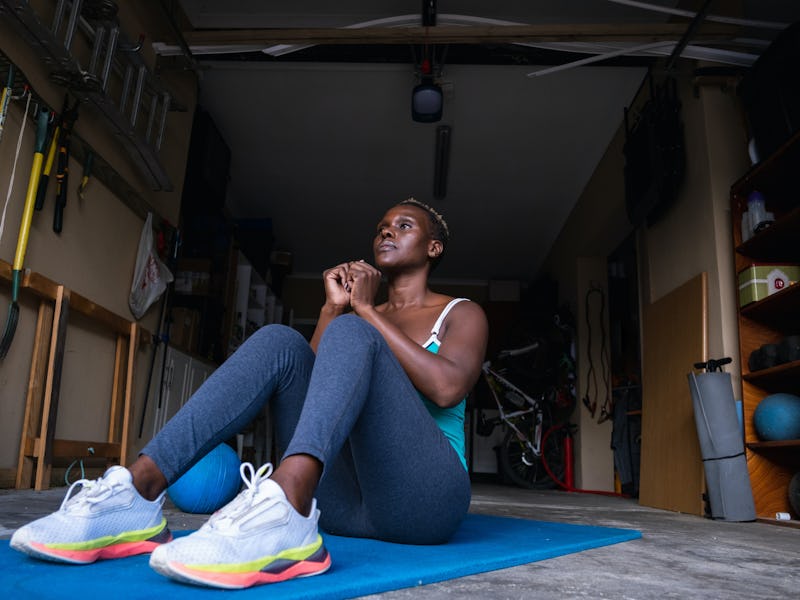You Can Just Work Out On Weekends — And Still Get Results
Research shows that on most health metrics, it’s about cumulative time instead of regularity.

Physical activity has established benefits for health. The World Health Organization recommends adults do a minimum of 150–300 minutes of moderate or 75–150 minutes of vigorous activity each week. This can include active transport from place to place, exercise for fun and fitness, energetic housework, or physical activity at work.
These amounts can be accrued by being, as the WHO recommends, regularly active throughout the week or being a “weekend warrior” who does the bulk of their activity on one to two days only, which don’t need to be consecutive.
So far, experts haven’t fully established which of the two patterns is better for overall health. For many people, busy lifestyles may make it hard to be physically active every day. It may be more feasible to squeeze most physical activity and exercise into a few days.
A fresh analysis of the large UK Biobank database attempted to compare these two patterns of weekly activity and compare how they reduced cardiovascular risk for heart attacks, heart failure, irregular heartbeat, and stroke.
What the new study found
Researchers analyzed records from 89,573 participants who wore a wrist activity tracker for seven days and were tracked for cardiovascular events for over six years.
Those who did less than the WHO-recommended 150 minutes of moderate-to-vigorous physical activity per week were considered inactive. About a third (33.7 percent) of participants were inactive. Some 42.2 percent were termed active “weekend warriors” (they did at least 150 minutes, and more than half of it occurred within one to two days), and 24 percent were regularly active (at least 150 minutes with most activity spread out over three or more days).
Researchers considered the potential factors that could explain the link between physical activity and new cases of cardiovascular events, such as smoking and alcohol intake. They found both active groups showed a similarly lower risk of heart attack (a 27 percent reduction for weekend warriors and 35 percent for regularly active people, compared with inactive participants).
For heart failure, weekend warriors had a 38 percent lower risk than inactive people, while regular exercisers had a 36 percent lower risk. Irregular heartbeat risk was 22 percent lower for weekend warriors and 19 percent lower for regularly active people. Stroke was 21 percent and 17 percent lower for weekend warriors and regular exercisers, respectively.
Busy people might find it easier to plan activity on the weekend.
Not so fast. Some study limitations
It is surprising the study’s authors define “weekend warrior” as those who do at least half of their activity in one or two days but did not consider the actual days of the week the activity was done. The main study results we describe above refer to doing most exercise in one or two days of the week, not a weekend pattern.
A closer examination of the study’s supplementary data, where data for Saturday and Sunday are presented, shows those who are regularly active, but not those who exercise on the actual weekend, enjoy a lower risk of stroke (20 percent).
Despite the many advantages the UK Biobank activity trackers have over questionnaire-based studies, these trackers are not great at capturing strength-training exercises, such as weights or pilates, and other static activities that have established cardiovascular health benefits.
What other research in this area says
There have been several questionnaire-based studies in this area in the past 20 years.
Our 2017 study, for example, combined data from 63,591 adults from England and Scotland and tracked them over 12 years. We looked at risk reductions for death from any cause, cardiovascular disease, and cancer causes. We found similar benefits among people who clocked at least 150 minutes of moderate-intensity physical activity or at least 75 minutes of vigorous-intensity physical activity in one to two sessions per week, compared with three sessions or more per week.
Our more recent studies used activity trackers and emphasized the flexibility of activity patterns that benefit the heart and circulation. We found doing short one-minute-long bouts of incidental vigorous physical activity three to four times a day can cut the risk of death from cardiovascular causes by almost half.
Similarly, in another study, we found just 19 minutes of vigorous physical activity a week was associated with a 40 percent reduction in the risk of cardiovascular death, with steadily increasing benefits to the maximum amount of vigorous activity recorded (110 minutes a week linked to a 75 percent risk reduction).
What it means for you and your routine
Taken together, the new study and previous research suggest the same thing: if it is difficult or impossible to find time to be active during a busy week, it is good enough to plan moderate to vigorous physical activities on a couple of weekdays or on the weekend.
That said, the study’s supplementary data show a clear advantage in being regularly physically active on most days of the week. This is not surprising considering it has been established that a good session of aerobic exercise, for example, improves heart health risk factors such as blood pressure and blood glucose and cholesterol levels for a day or longer. Such effects assist with the day-to-day management of these risk factors and provide better long-term protection against major heart and circulatory events.
But confirmation that how physical activity can be accumulated across the week for heart health benefits is relatively flexible is encouraging. It offers more opportunities for more people to be active when it is convenient and practical for them, which is considerably better than being inactive.
This article was originally published on The Conversation by Emmanuel Stamatakis, Matthew Ahmadi, and Raaj Kishore Biswas at the University of Sydney. Read the original article here.